A look at the enigmatic Evaporative Emission Control System…
Does your garage reek of gasoline fumes? Seldom-noticed parts in your Corvette make your garage smell better and make the air cleaner. The Evaporation Emission Control system, EVAP or EEC, also called Evaporation Control System, ECS, became a part of many car’s inner workings in 1970. It is one of the most benign pollution control systems with a relatively low cost and with no impact on performance. EVAP hasn’t gotten the attention or respect it deserves. We will help correct that problem with a look at this little-understood system.
What is an Evaporation Emission Control System (EVAP)?
An Evaporative Emission Control System (EVAP) is used to prevent gasoline vapors from escaping into the atmosphere from the fuel tank and fuel system.
How does an Evaporation Emission Control System (EVAP) work?
Fumes from the gas tank go into a storage canister where activated carbon absorbs the fumes. When driving, a small amount of outside air is drawn through the canister. The air removes the stored gas fumes from the carbon, takes them into the intake manifold and from there they burn along with the main air-fuel mixture. This makes your garage smell better and keeps the air cleaner. The EVAP system is fairly simple and its parts are relatively inexpensive.
The Three Essential Parts of an EVAP System
-
- EVAP Canister. The heart of the EVAP system is a canister filled with activated carbon. The carbon absorbs gas fumes from the tank and stores them until being released and drawn into the intake to burn with the engine’s air-fuel mixture. Early canisters had an external valve on top.
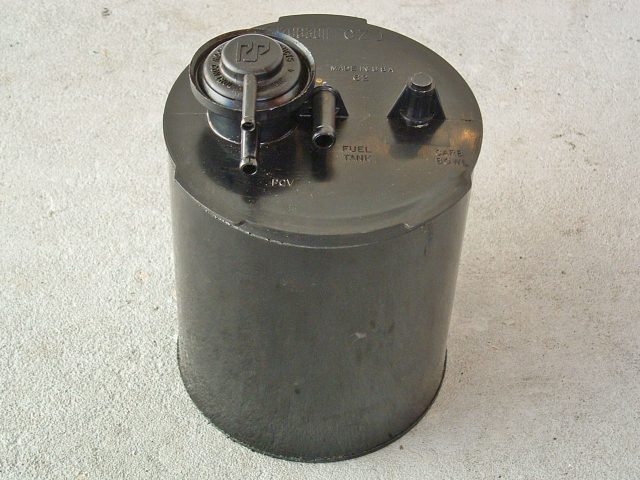
- Carbon. The carbon inside the EVAP system’s canister stays effective for many years. With early EVAP canisters, the carbon can be removed and replaced. A common source of activated carbon is aquarium supply stores for their filters.
-
- EVAP Filter. A virtually unknown filter is under the lower cover and cleans the air going into early EVAP canisters. The factory service manual says to change the filter at least every 24 months or 24,000 miles. I’ve never seen or heard of one being replaced but they are available.
The History of EVAP Systems: Smog Control
In the early seventies, the smog control devices added to cars were scorned by most performance enthusiasts. People in rural environments wondered what the fuss was all about, unless they flew into LA and saw the fiendish looking brownish cloud blanketing the valley. In this era it was quite common for owners to remove the Air Injector Reactor (AIR) pump and its tubing, Exhaust Gas Recirculation (EGR) valve if the intake manifold was changed, and the catalytic converter after its debut in 1975. Swept away in this rush to restore performance often were the EVAP canister and its hoses. Only the Positive Crankcase Ventilation (PCV) valve was usually untouched.
Hydrocarbon emissions are a principal cause of smog. Prior to the sixties, fumes from the interior of the engine, which are heavily laden with hydrocarbons, were fully vented to the atmosphere by a large road-draft tube and a vented breather cap. These hydrocarbons came from gases blowing by the rings and valve guides and the hot engine oil being whipped up by rotating components. The PCV system allowed these fumes to be drawn into the intake manifold to be burned.
Introducing the Evaporation Emission Control System
EVAP did the same for the gas fumes from the gas tank. In prior years, gas tank fumes were allowed to escape into the atmosphere. This was the era of the fully vented gas caps. The EVAP system’s function was and still is admirable. It keeps these completely unburned hydrocarbons out of the atmosphere. A little gas evaporating now and then might seem like a minor issue but it’s not.
When a fuel tank is not sealed, fumes escape twenty four-seven, even when the car is parked. This alone can contribute as much as twenty percent of a vehicle’s total pollution. It’s been widely reported that Sun Oil Company research showed that a vehicle with a fully vented, missing or inoperative fuel cap allows 22 gallons of gasoline to evaporate over the period of one year. Note that these fumes are completely unburned hydrocarbons so they are much worse for smog than the almost completely burned hydrocarbons emitted from the exhaust of a modern automobile. That’s why modern cars produce an error code if the gas cap is not properly sealed.
Understanding Corvette Evaporation Emission Control Systems (EVAP)
The History
For the first few years, Corvette EVAP canisters employed a valve on top that opens when the engine is running above idle to allow manifold vacuum to draw air through the canister. At idle, the valve is closed so that the extra air and vapors don’t upset the idle mixture. At higher rpm’s more air is going through the motor and the EVAP has little effect on the mixture. The manifold vacuum supplied to the canister on the early systems comes from a hose that runs to the T connector at the PCV valve. The canister valve is controlled by the level of vacuum it receives from the small hose that goes to the timed port on the carburetor.
Other canister components include its activated carbon and, on the first systems, a filter at the bottom to keep dirt and debris from getting into the carbon. The carbon works effectively for many years, but it also can be replaced on the early canisters. The third hose goes from the canister to the steel tubing, which runs along the left side of the frame rearward to the gas tank.
The Evolution of the Corvette EVAP System
At the gas tank on 1970 – 1974 Corvette EVAP systems, a fuel separator valve is bolted onto a bracket near the top of the tank’s left side. A 3/8-inch hose on the bottom of this valve connects to a vent tube on the top of the tank and a 1/4-inch hose at the top connects to the steel tubing. The fuel separator valve has a float inside that closes the valve when gas floods the valve. This can happen from fuel sloshing in the tank or if the car was parked on an extreme angle. The valve prevents liquid fuel from entering the tubing and overwhelming the storage value of the canister.
A new type of gas cap was introduced for the EVAP system. It’s stamped “SEALED” on early models and it seals the inlet, except in the unlikely case when it can vent if the pressure in the tank gets high enough. The only time high pressure will occur is if a blockage occurs in the EVAP system.
When to Check Your Corvette’s EVAP System
If your Corvette has seen many seasons or gone many miles, it’s worth checking the EVAP system to make sure it’s working properly. The components of the system are hidden from view but it performs an admirable service. And it does so reliably, at a low cost and with no drag on performance or fuel mileage.
9 Components to Check When Inspecting Your Corvette’s EVAP System
- Canisters are still available for mid-seventies EVAP systems. Corvette Central lists this canister for all 1974 to 1977 models (#353017). By then the EVAP system dispensed with the vacuum valve on top.
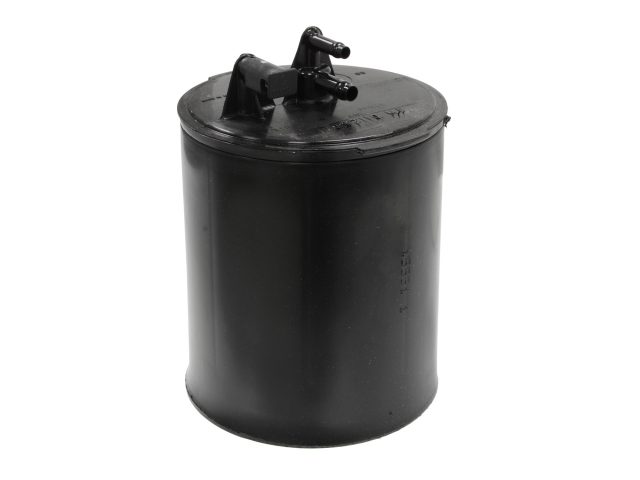
- A fuel vapor separator valve (#353162) mounts on the side of the gas tank at the top on most 1970-1974 Corvettes. The good news is that new ones are available. The bad news is that it’s a chore to access for inspection or replacement.

- Gas caps changed to non-vented on EVAP equipped cars. In the early seventies, the caps were stamped “SEALED.” The cap’s gold dichromate coating is fragile. Replacing an old tarnished cap with new is an inexpensive way to brighten up those gas station stops.
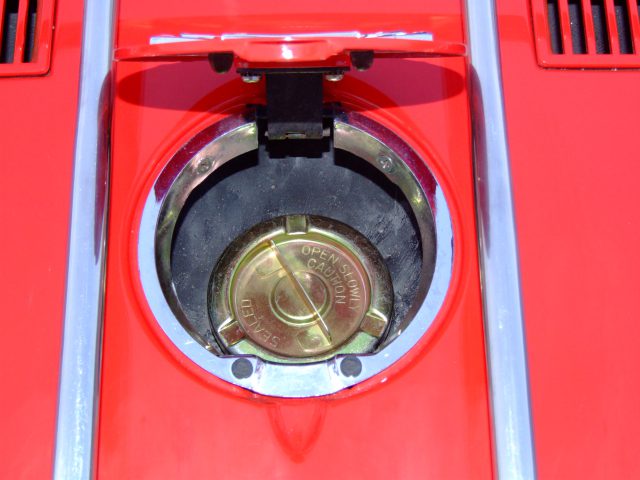
- The hoses in the EVAP system (#353252) should be labeled “FUEL VAPOR” or “PCV/EEC.” It takes a tougher rubber to handle fuel vapors than that designed to handle just gas, oil or coolant.
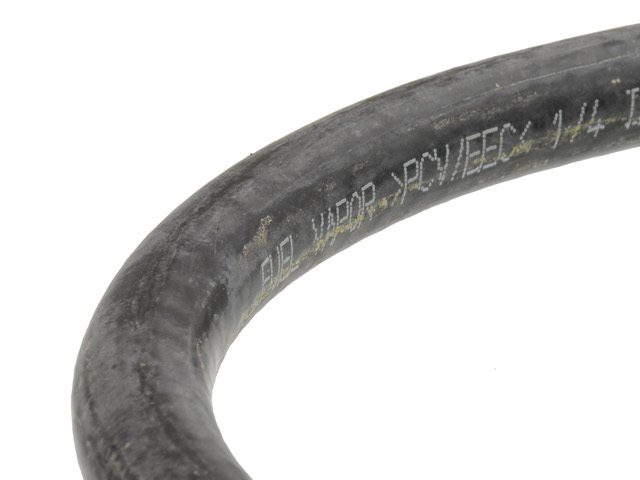
- EVAP hoses with clamps (#353252 and #353254) are available for connecting the vapor line on the frame to the canister and at the other end for connecting to the fuel separator valve.
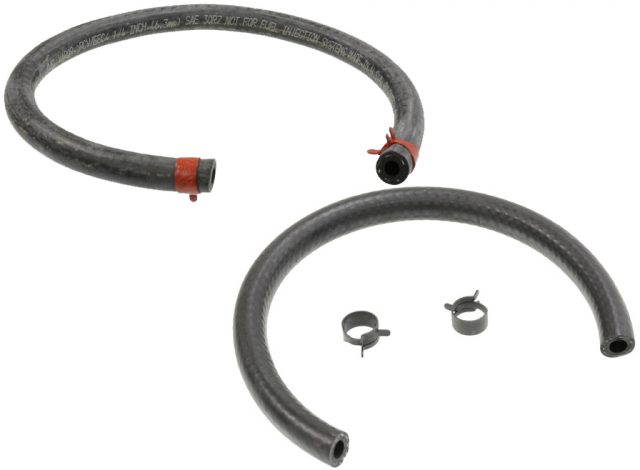
- Air is drawn through the canister into the intake manifold via the T fitting at the PCV valve. The PCV valve serves the same function as the EVAP system by preventing hydrocarbons from venting to the atmosphere. Check these hoses and their connections. Engine compartment heat and fuel vapors can harden and crack the rubber causing vacuum leaks.
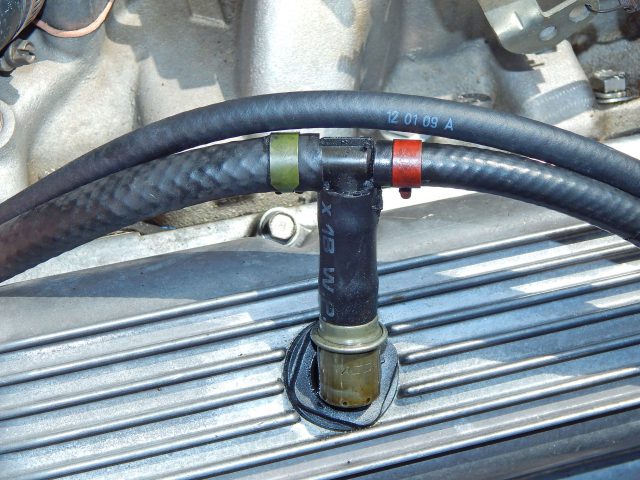
- Also inspect the rubber grommets that seal the PCV valve and the breather pipe to the valve covers. When these harden or crack, fumes can escape and dirt can get into the motor. On the right is a grommet for steel valve covers which has a narrower groove than grommets for aluminum covers.
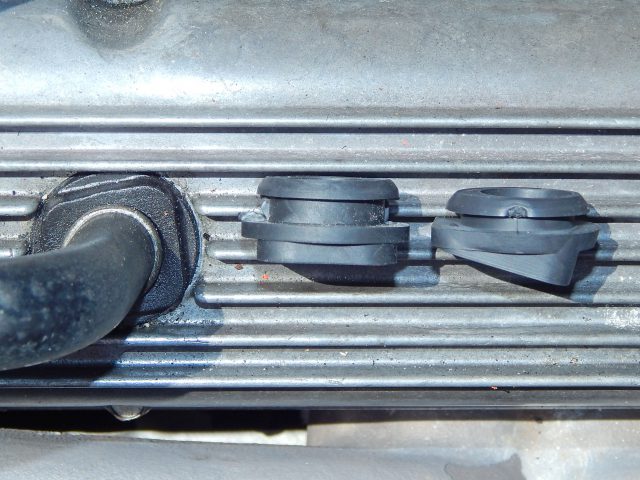
- When accessing the canister, it’s a good idea to order new seals for the splash shield. This rubber is likely to be in sad shape too. Use weatherstrip adhesive to attach the rubber to the shields and, if originality is a concern, reinstall the factory seal staples. Black oxide-finished body bolts with captive washers are also available for the shield and canister bracket.
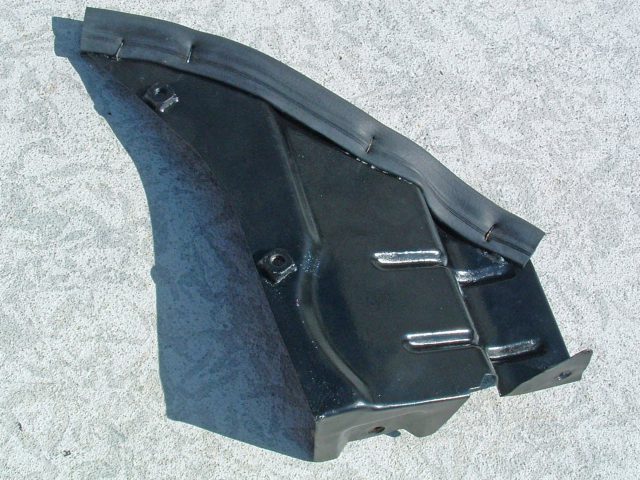
- The fuel separator valve bolts to a bracket on the top left side of the gas tank on early systems. Even if your EVAP system is not connected now, consider buying the original tank. The tank vent tube can be blocked off and a vented cap used until the system is restored.
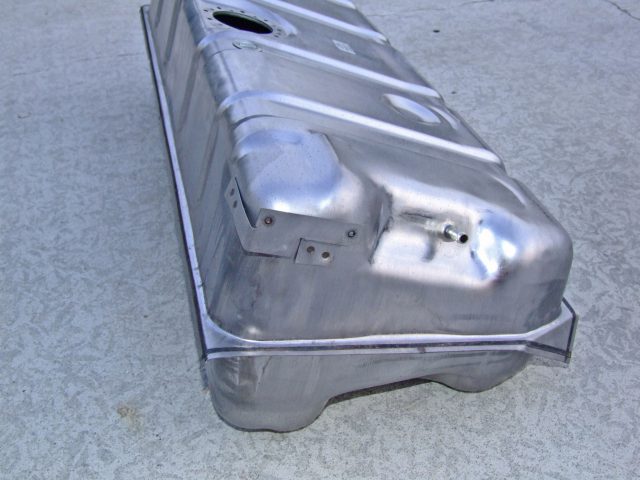
How to Replace the Evaporation Emission Control System (EVAP) on Early 70s Corvettes
Can you spot the EVAP canister? It’s well hidden on early seventies Corvettes, located far out of the way under the windshield washer fluid tank.
- Remove the rocker molding to access these splash shield bolts. Try hard not to break the molding screws or strip their heads. These screws are exposed to the elements and their machine threads are often rusted. Next, remove the splash shield. Again, apply penetrating oil to the exposed threads of bolts. It’s important to try not to break loose the weld nuts.
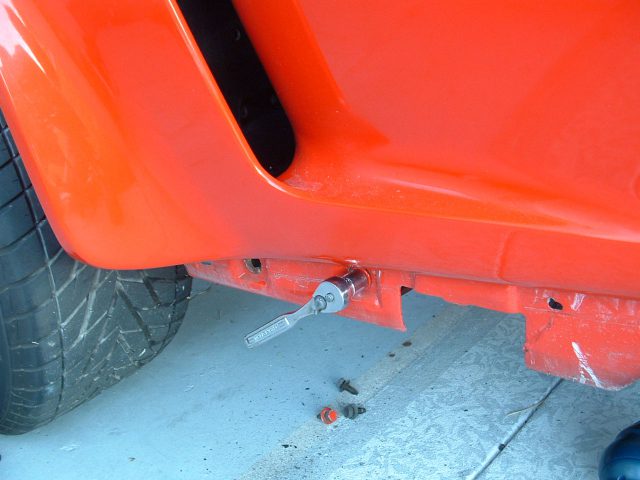
- Remove the three canister bracket bolts. Here too, apply penetrating oil on exposed bolt threads and try to not break the weld nuts loose. Be careful. Too much torque on the bolts will twist and distort the thin metal bracket.
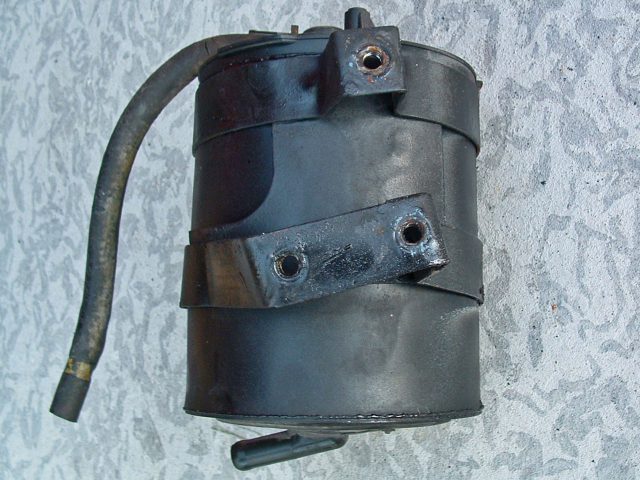
- Note the alignment of hose nipples to the bracket and mark this position on the canister so that when it is installed, the hoses will face the correct direction. Install the splash shield and the rocker molding to complete the job.
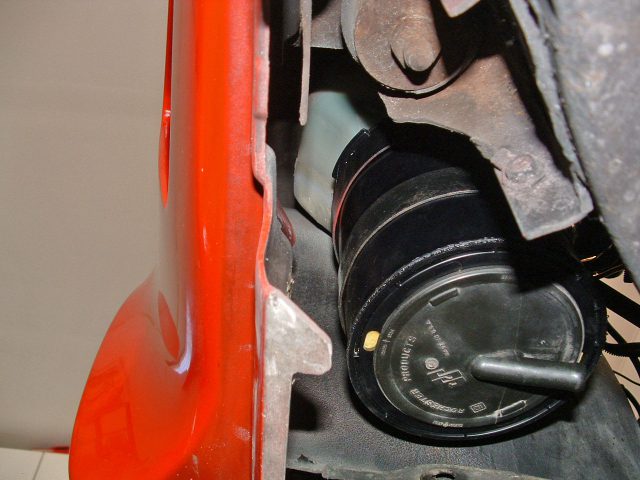
Story and photos courtesy John Pfanstiehl and VETTE Magazine
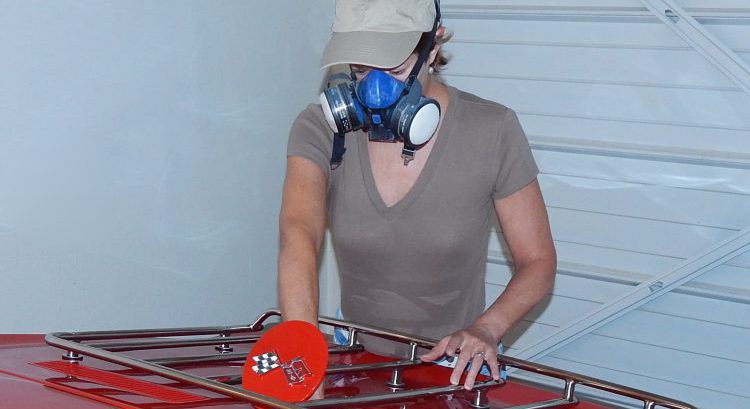
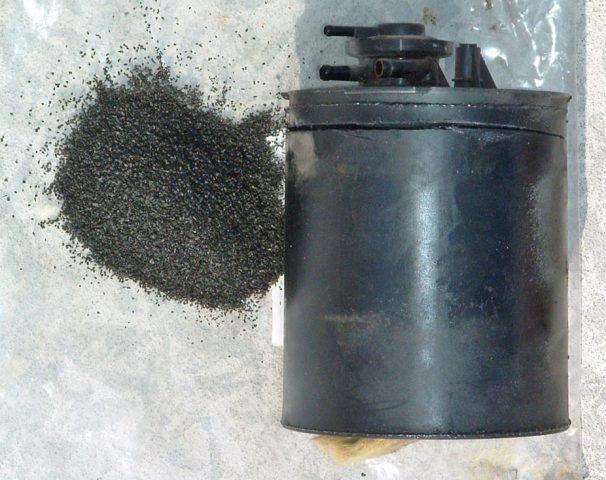
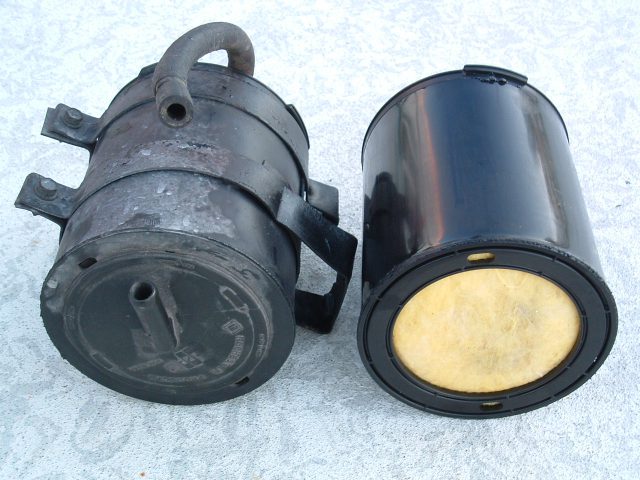
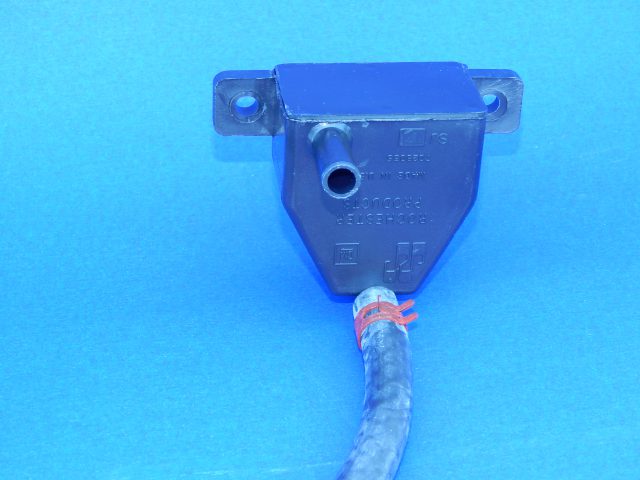
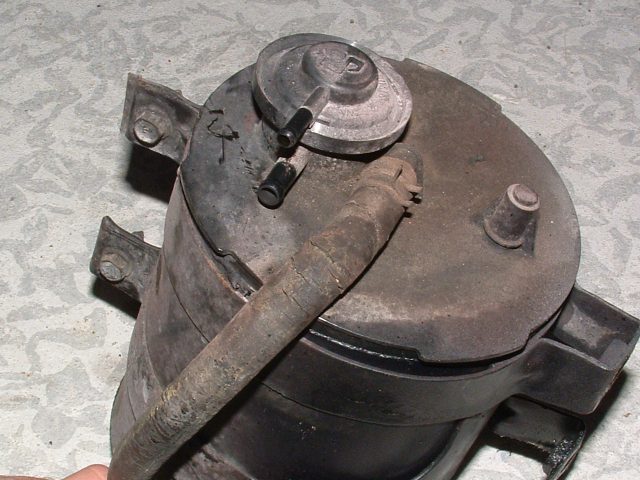
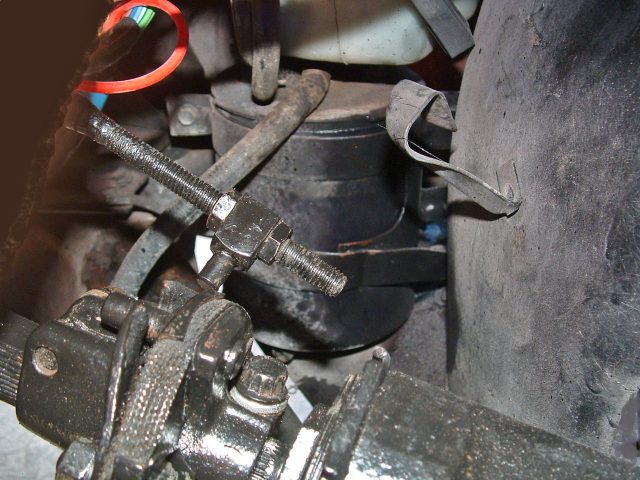
Gas smell when car is parked in garage . C6 2010 6.2 corvette. No obvious dripping of gas ,no residue on the garage floor . Car runs fine . However when my son parks it in the garage I can’t handle the fumes at all. please email him me back with possible suggestions . Thank you
Evap leaks can be tricky to locate. I recommend having the car smoke-tested to locate the leak.
Essentially wish to state your article is as astounding. The clearness in your post is just incredible, and I could expect you are a specialist regarding this matter.
This was a great article to stop gassy smelling car in my basement. I have a another question about doing this to stop the escaping gas fumes. When I crank my car in the basement, a 71 big block, I have to hurry and get it out as the fumes set off all my smoke fire detectors in my whole house. Will this prevent that from happening also?
It is terrible when it happens and takes a few minutes to stop all the loud noise going on. I have fanned my detectors trying to stop it but pretty high up and doesn’t do much good. This car couldn’t be worked on running in my basement besides the smells that do come from it sitting. I can open the door going down to the basement and smell it as soon as I open the door in the house. It is horrifying loud that sets off 3 levels counting the basement. Thank you, Bev
This is not gas fumes _______________ it’s exhaust fumes —————- the gas fumes are there with the engine not running. Might want to have the air fuel mixture checked. It could be running rich.
After years in restoration/modification, I am about to put a ’68 on the road that was pre-pollution. I will very likely install catalytic converters and now after reading this article, I am seriously thinking about retrofitting an EVAP/EEC system.
The ’68 tank has a top vent on the passenger side and when the body was off the frame, I installed the vent line along the right side of the frame with the gas line. If I must drop the tank, to add any components, I will.
I am thinking that with exception to the side of the installation on the car, I should be able to mimic the installation of any C3 by copying the component setup piece for piece right down to the “T” fitting at the PVC valve.
Your thoughts and suggestions.
I have a ‘68 as well. Is installing a EVAP/EEC system possible? Did John P agree with you? Great article
Can the line from the canister be connected to a vacuum port on the intake manifold rather than one on the carburetor throttle body?
I’m not sure what year/setup your comment is regarding, but it is always best to set it up as GM did. This will ensure there are no fume issues down the road.
Thanks for a well writen article . I have been at car shows parked next to these gassey vets, but never realized the cause. I own a 1980, but so far have not noticed any fumes in my garage (motor not running).
Thanks so much for the canister article. I had an high end audio shop refuse to work on my C3. There complaint was gas fumes. Then i found out that my frame was failing and i had to take the car off the road. Does anyone have a roller for a C3 1977 with a automatic transmission. The frame needs to be clean. Please help.
I have a 1978 corvette frame. It appears to be solid but will need to be removed from the body. I am willing to sell the body and frame together.
I have a wrecked ’78 Pace Car that needs a complete (“original” OEM) front surround clip w/headlights and hood Ass’y. Did you want to part-out your vette’s body? And, if so, how much for what I just listed? And, where is this car located (I’m in SoCal, I may be too far away).
Do you still have the ’78 Corvette to sell? I just read these EVAP articles, and about the guy, Mike, who was looking for a complete “Original” ’78 front end. I laughed when I
read Mike’s article to a friend, because that “Mike” may be me! And, for whatever reason, I can’t recall ever getting an answer to your post, that you had one, if it was me! (Wasn’t it Dan Quale who said, “A mind is a terrible thing to lose!”?) Any way, I am still looking for an original ’78 complete donor front end if you have one, or know someone (or somewhere) who has one. If not, I hope this story brought a laugh!
Just in case, you can reach me at (626) 806-0388 and leave a message to call.
I have a gassy 79 vette, Can someone tell me how to remove the canister.
Here is a link to where and how its installed. https://goo.gl/photos/wbV8bYZAgAnK5zky5
I have a 79 corvette and it is extremely gassy once in the garage. Where is the canister located and how is it removed?
The vapor canister filter was used by GM, AMC/Jeep & Chrysler from 1970-1993. It was even used by Tecumseh and Twin Coach Busses. I used to change it on my Camaros once a year. They can get saturated at times either from moisture coming into the filter or from excess vapors from inside the can. And this can be a source of gas fumes as well.
Should fuel be in the lines?
This video was extremely helpful, I have been trying to diagnose the cause of gas fumes on our ’73 for a long time. I did find the separator valve leaking years ago, but they were not available at that time, so I covered the outside of the housing with common epoxy glue to stop the leak of fuel. I now have and will install a new separator valve, but I do not see any listing for the filter at the bottom of the EVAP canister, where can these be obtained?
1970-1974 vent vapor canister air filter can be found at https://https://www.corvettecentral.com/search?CurrentSearchCategoryId=&q=vent+vapor+canister
I have a 1960 daily driver corvette and it is gassy. I can really smell the fumes in my garage. Should I consider installing a EVAP canister?
On a 62 the gas tank filler rubber tube develops cracks. I replaced it. A real job.